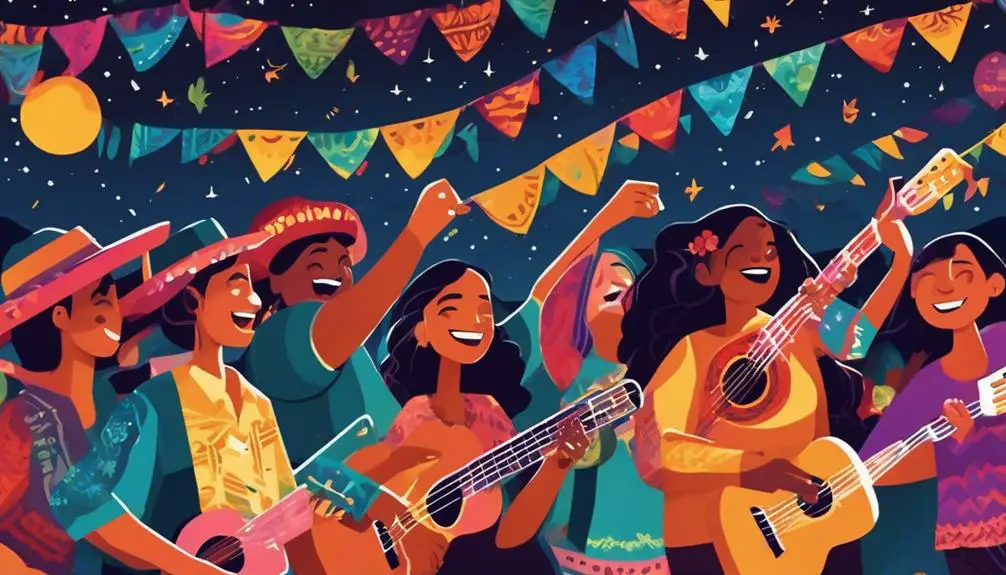You're about to plunge into the vibrant world of Spanish slang, where native speakers express themselves with authenticity and flair. Mastering jerga is the key to accessing meaningful connections with the culture and its people. As you explore the intricacies of Spanish slang, you'll discover regional variations, cultural fusions, and the evolution of informal expressions. You'll learn how reggaeton and Latin influencers use jerga to connect with their audience, and how embracing regional colloquialisms can deepen cultural understanding. Get ready to immerse yourself in the rhythms and nuances of Spanish slang, and uncover the cultural richness that awaits you.
Decoding Spanish Slang Basics
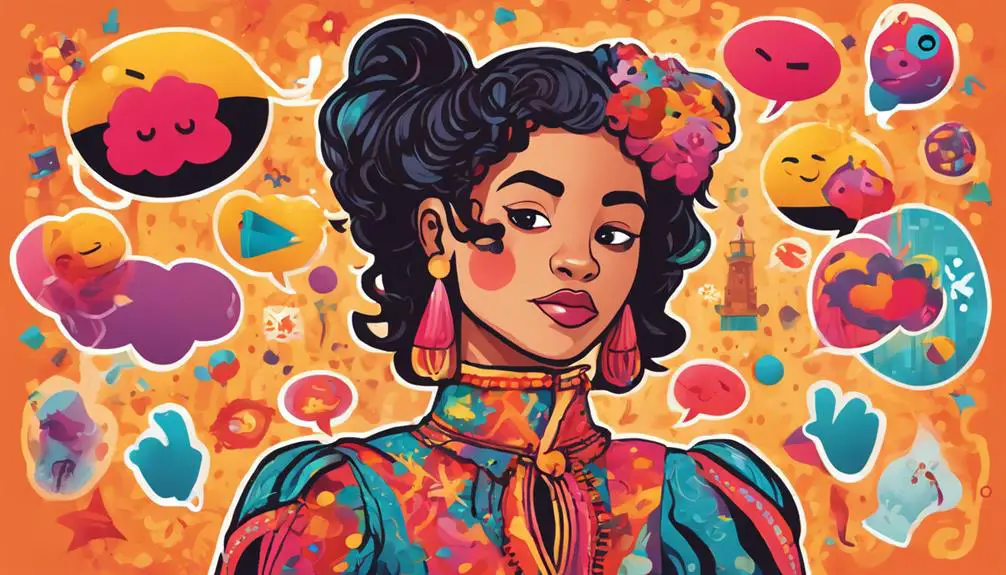
You'll often find that Spanish slang, or 'jerga,' is a key to revealing the authentic, unfiltered voice of native speakers, as it's woven into the fabric of everyday conversations. By exploring the origins of slang, you'll gain insight into the evolution of the Spanish language.
Slang emerges from the streets, influenced by cultural and social factors, such as age, region, and socioeconomic status. It's a reflection of the people's creativity, adaptability, and resistance to conform to traditional norms.
Language evolution is a continuous process, shaped by the interactions between speakers and their environment. Slang words and phrases often originate from colloquial expressions, idioms, and metaphors that are specific to a particular region or group.
As language evolves, slang adapts, incorporating new words, abbreviations, and acronyms. Understanding the roots of slang helps you appreciate the dynamic nature of the Spanish language and its ability to reflect the pulse of the community.
Common Jerga in Everyday Conversations
Frequently, in casual conversations with friends or acquaintances, you'll stumble upon colloquial expressions that are an integral part of everyday interactions in Spanish-speaking countries. These expressions, known as 'jerga,' are a unique blend of street lingo and cultural nuances that reflect the vibrant youth culture of these countries.
When engaging with locals, you'll often hear phrases like '¿Qué onda?' (What's up?) or 'Estoy hasta la madre' (I'm fed up), which are essential to understanding the rhythm and flow of everyday conversations.
Incorporating jerga into your language skills will help you better connect with native speakers and navigate social situations with ease. For instance, using phrases like 'Vale, ¿dónde vamos a ir?' (Okay, where are we going?) or 'Me duele la cabeza' (I have a headache) will make you sound more natural and confident in your interactions.
Slang Across Spanish-Speaking Countries
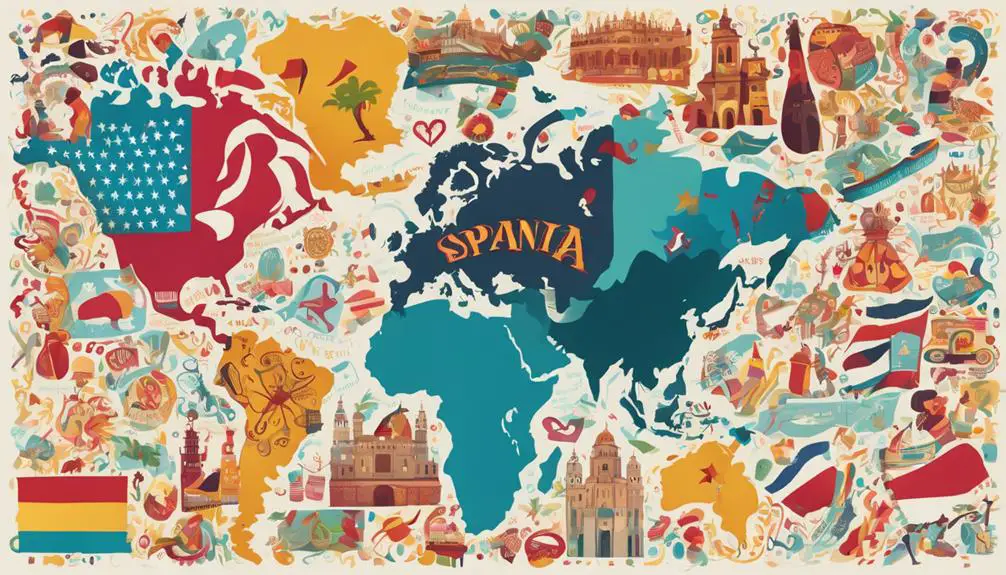
Across Spanish-speaking countries, regional slang variations emerge, reflecting local cultural identities and historical influences that set them apart. As you explore the diverse linguistic landscape, you'll notice that language borders are often blurred, giving rise to unique cultural fusions.
For instance, in Mexico, you'll encounter a blend of indigenous and colonial influences in their slang, while in Argentina, Italian and Spanish influences have merged to create a distinct vocabulary.
You'll find that cultural fusion is a recurring theme across Spanish-speaking countries. In the Caribbean, African rhythms and Spanish phrases have merged to create a vibrant linguistic tapestry. Similarly, in Central America, indigenous languages have blended with Spanish to produce a distinct dialect.
As you navigate these linguistic borders, you'll discover that each region's slang is a reflection of its history, cultural heritage, and geographical location. By embracing these regional variations, you'll gain a deeper understanding of the rich cultural diversity that exists within the Spanish-speaking world.
Embracing Regional Colloquialisms
By immersing yourself in regional colloquialisms, you gain a more authentic connection to the local culture and its people. You'll discover that each region in Spain and Latin America has its unique flavor of Spanish, shaped by local history, customs, and traditions. Embracing these regional colloquialisms allows you to explore the cultural identity of the place, making your interactions more meaningful and engaging.
Local dialects, such as Andalusian Spanish in Spain or Rioplatense Spanish in Argentina, are a reflection of the community's values, beliefs, and way of life. By learning and using regional expressions, you demonstrate your respect for the local culture and people. This, in turn, helps build stronger relationships and fosters a deeper understanding of the community.
As you immerse yourself in regional colloquialisms, you'll notice how they're intertwined into everyday conversations, adding flavor and personality to interactions. By embracing these local dialects, you'll find yourself more comfortably engaging in social situations, making friends, and experiencing the authentic spirit of the place.
Mastering Informal Expressions
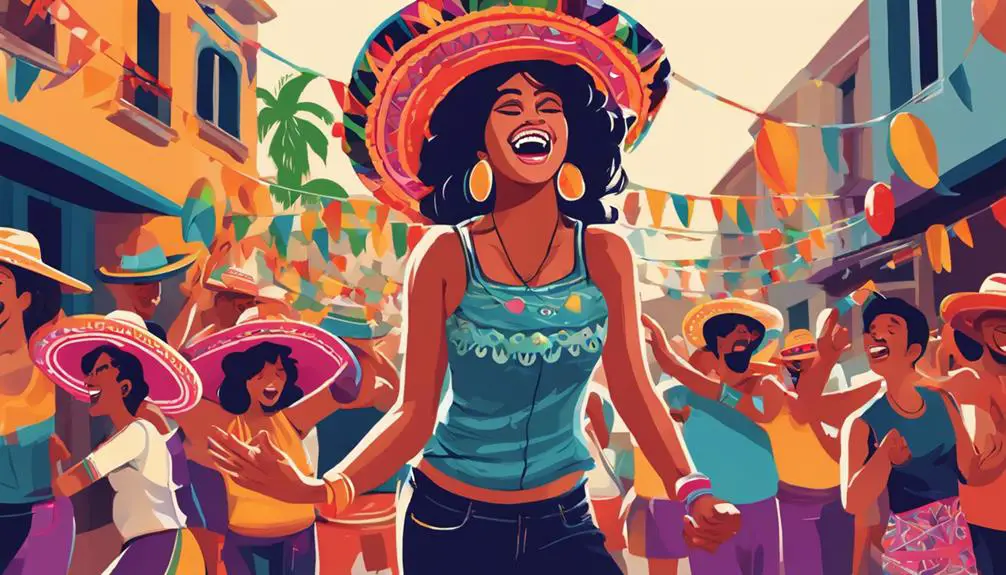
As you explore the nuances of regional colloquialisms, you'll find that mastering informal expressions is vital to accessing authentic interactions with locals. Informal language is the key to building rapport and fostering meaningful connections with native speakers.
To truly immerse yourself in the Spanish-speaking world, understanding the intricacies of slang evolution is fundamental. This dynamic process involves adapting to regional dialects, cultural references, and historical context. By doing so, you'll gain a deeper understanding of the cultural identity tied to each expression.
For instance, the Argentine phrase 'tomar laHair' (to take a walk) reflects the country's love for outdoor activities. Similarly, the Mexican expression 'hacer patria' (to make country) highlights the importance of community.
Mastering informal expressions will enable you to navigate everyday conversations with confidence, allowing you to connect with locals on a deeper level. By embracing the complexities of slang evolution, you'll reveal a more authentic experience of Spanish-speaking cultures.
When to Use Formal Language
When maneuvering formal situations, you'll frequently find yourself required to employ formal language to convey respect, professionalism, and authority. Whether attending a business meeting, writing a formal email, or addressing a superior, using formal language is essential to make a good impression and show deference.
In Spain and many Latin American countries, formal norms dictate that you use formal language when interacting with people you don't know well, especially those older or in positions of authority.
In professional settings, business etiquette demands the use of formal language to establish trust and credibility. Using formal language demonstrates your ability to adapt to different situations and communicate effectively.
For instance, when communicating with a potential client or business partner, using formal language can make or break a deal. By mastering formal language, you'll be able to navigate formal situations with confidence and poise, making a lasting impression on those around you.
Slang in Latin American Culture
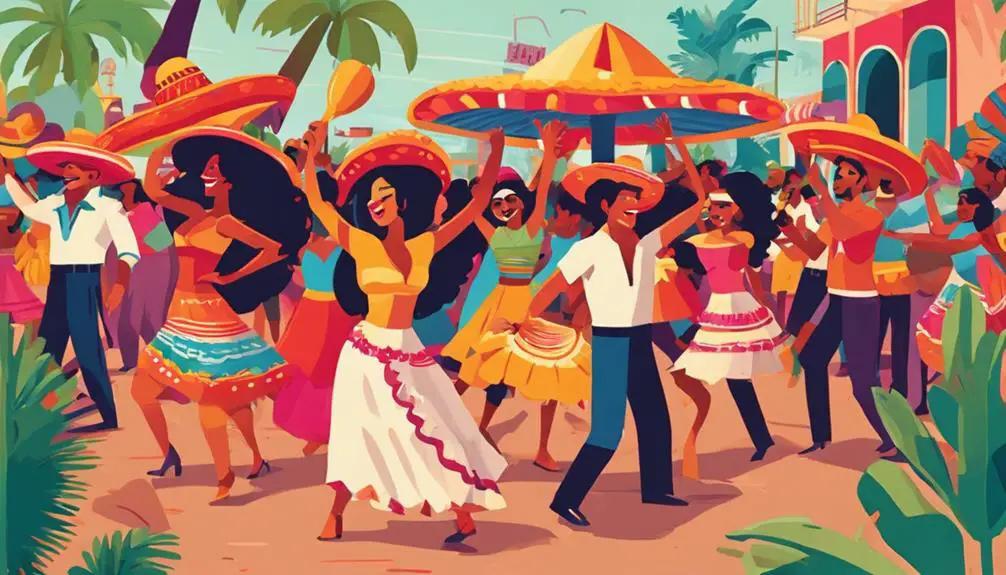
You'll often find that Latin American cultures, particularly in informal settings, pulse with vibrant slang that injects flavor and personality into everyday conversations. As you immerse yourself in the Latin Identity, you'll notice that slang is an integral part of the cultural fabric. It's a reflection of the region's rich Cultural Fusion, where African, European, and indigenous influences blend together.
In Latin America, slang isn't just a way to sound cool; it's a way to express oneself, to claim identity, and to connect with others. Slang is often used to add humor, irony, or emphasis to a conversation. It's a way to signal that you're part of the in-crowd, that you're familiar with the local lingo.
As you navigate the complexities of Latin American slang, remember that it's not just about using the right words; it's about understanding the cultural context in which they're used. By embracing the nuances of Latin American slang, you'll gain a deeper appreciation for the region's vibrant cultural heritage.
Jerga in Music and Media
In Latin American music and media, jerga isn't just a linguistic flourish, but a powerful tool for artists to express their cultural identity and connect with their audience on a deeper level.
You'll often hear Reggaeton lyrics infused with jerga, as artists like J Balvin and Bad Bunny use slang to add authenticity and swag to their rhymes. In music videos, you'll catch glimpses of Latin influencers and celebrities dropping jerga phrases, further blurring the lines between high and low culture.
Rap culture, in particular, has embraced jerga as a way to assert street cred and rebel against mainstream norms. Even TV commercials have caught on, using jerga to appeal to younger, urban audiences.
Building Connections Through Jerga
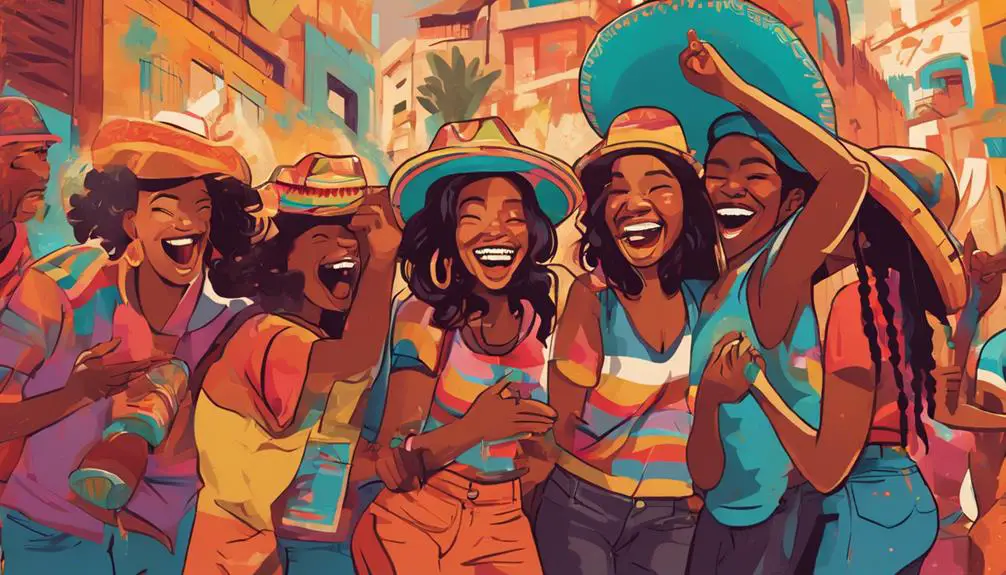
By embracing jerga, artists and influencers can forge a deeper connection with their audience, speaking directly to their experiences and emotions through a shared cultural language. As you use jerga in your content, you're not just throwing in some trendy slang – you're showing your audience that you understand and respect their cultural background. This cultural immersion helps build trust and rapport, making your message more relatable and impactful.
When you speak the language of your audience, you're demonstrating language empathy, acknowledging that you value their unique experiences and perspectives. By doing so, you create a sense of community and belonging, making your audience more receptive to your message.
As you navigate the nuances of jerga, remember that it's not just about using trendy phrases – it's about genuinely connecting with your audience on a deeper level. So, take the time to learn and understand the cultural context behind the slang, and watch your relationships with your audience flourish.
Frequently Asked Questions
Is Spanish Slang Used More by Younger or Older Generations?
When you explore age-based slang trends, you'll find that younger generations are more likely to adopt and popularize Spanish slang.
Slang adoption rates are higher among teenagers and young adults, who use social media and online platforms to share and learn new phrases.
In contrast, older generations tend to stick to more traditional language, making younger generations the driving force behind Spanish slang's evolution and spread.
How Do I Respond to Someone Using Slang I Don't Understand?
As you're transported back to the medieval era, a knight's 'Hear ye, hear ye!' echoes in your mind, but let's fast-forward to the present.
When someone hits you with slang you don't understand, don't panic! Employ Slang Strategies: politely ask them to explain, or nod along and change the subject.
Look for Cultural Clues like body language, tone, and context to help decipher the meaning. Stay calm, and you'll be a master of slang navigation in no time.
Can I Use Slang in Formal Writing, Like Emails or Reports?
When you're writing formal emails or reports, it's generally best to avoid using slang. You want to maintain a professional tone and guarantee clarity in your communication.
Slang can come across as informal and may not be universally understood. Stick to standard language to convey your message effectively.
You're aiming for a professional, respectful tone that showcases your expertise.
Do Native Speakers Use Slang in Professional Settings?
You're wondering if native speakers use slang in professional settings.
On one hand, formal exceptions like company-wide emails or client reports typically stick to standard language.
On the other hand, workplace norms can be more relaxed, and you might hear slang in casual conversations or internal meetings.
While it's not common in formal writing, some industries or teams might adopt slang as a way to build camaraderie or convey a relaxed atmosphere.
Are There Any Universal Slang Words Understood Across Countries?
When exploring slang across countries, you'll find that some words transcend borders, creating cross-cultural connections. These language bridges facilitate communication among diverse groups.
While regional slang dominates, a few universal words have emerged, understood across nations. You'll notice that certain phrases, like 'selfie' or 'hashtag,' have become ubiquitous, bridging linguistic gaps.
As you navigate global conversations, recognizing these shared slang terms will help you connect with people from diverse backgrounds.
Conclusion
As you master the art of jerga, you'll find yourself effortlessly weaving in and out of conversations like a local. Your new slang skills will bridge cultural gaps, and you'll stumble upon hidden gems in Latin American music and media.
Embrace the rhythm of regional colloquialisms, and you'll find that your Spanish language journey has only just begun.

